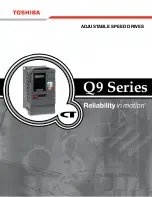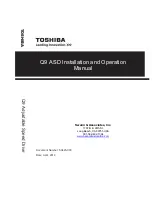
es
gb
-
9
-
Keep cutting tools sharp and clean.
Properly
maintained cutting tools with sharp cutting edges are
less likely to bind and are easier to control.
Use the power tool, accessories and tool bits etc.
in accordance with these instructions, taking into
account the working conditions and the work to
be performed.
Use of the power tool for operations
different from those intended could result in a
hazardous situation.
Service
Have your power tool serviced by a qualified repair
person using only identical replacement parts.
This will ensure that the safety of the power tool is
maintained.
Use special care when working corners, sharp
edges, etc. Avoid bouncing and snagging the
accessory.
Corners, sharp edges or bouncing have
a tendency to snag the rotating accessory and cause
loss of control or kickback.
Do not attach a saw chain woodcarving blade or
toothed saw blade.
Such blades create frequent
kickback and loss of control over the power tool.
Safety Warnings for Impact Wrenches
Hold power tool by insulated gripping surfaces
when performing an operation where the cutting
accessory or fastener may contact hidden wiring.
Cutting accessory and fasteners contacting a “live”
wire may make exposed metal parts of the power tool
“live” and could give the operator an electric shock.
Use auxiliary handle(s), if supplied with the tool.
Loss of control can cause personal injury.
Hold the machine with a firm grip.
High reaction
torque can briefly occur while driving in and loosening
screws.
Secure the workpiece.
A workpiece clamped with
clamping devices or in a vice is held more secure than
by hand.
Always wait until the machine has come to a
complete stop before placing it down.
The tool
insert can jam and lead to loss of control over the
power tool.
Never use the machine with a damaged cable. Do
not touch the damaged cable and pull the mains
plug when the cable is damaged while working.
Damaged cables increase the risk of an electric shock.
Products sold in GB only:
Your product is fitted
with a BS 1363/A approved electric plug with internal
fuse (ASTA approved to BS 1362). If the plug is not
suitable for your socket outlets, it should be cut off and
an appropriate plug fitted in its place by an authorised
customer service agent.
The replacement plug should have the same fuse
rating as the original plug. The severed plug must
be disposed of to avoid a possible shock hazard
and should never be inserted into a mains socket
elsewhere.
Products sold in AUS and NZ only:
Use a residual
current device (RCD) with a rated residual current of
30 mA or less.
PRODUCT DESCRIPTION AND PECIFICATIONS
Read all safety warnings and all
instructions.
Failure to follow the warnings
and instructions may result in electric
shock, fire and/or serious injury.
Intended Use
The machine is intended for driving
in and loosening screws and bolts as well as for
tightening and loosening nuts within the respective
range of dimension.
Tool components
Screwing/unscrewing impact wrench.
4 working ½” square bits: 17mm, 19mm, 20mm, 22mm
Fast replacement brush set.
High density polipropilene hard carry case for safety
transportation.
MOUNTING
Change of useful
Before any manipulation of the power tool, remove the
mains plug from the socket.
When assembling the tool, make sure that it is firmly
attached to the tool holder. A tool that is not firmly
attached to its housing can become loose and make
you lose control over it.
- Insert the hex bit on the 1/2" square of the tool
housing
OPERATION
Method of Operation
The tool is driven by an electric motor via a gear and
impact mechanism.
The working procedure is divided into two phases:
Screwing in
and
tightening
(impact mechanism in
action).
The impact mechanism is activated as soon as the
screwed connection runs tight and thus load is put
on the motor. In this instance, the impact mechanism
converts the power of the motor to steady rotary
impacts. When loosening screws or nuts, the process
is reversed.
Starting Operation
Observe correct mains voltage! The voltage of
the power source must agree with the voltage
specified on the nameplate of the machine. Power
tools marked with 230 V can also be operated with
220 V.
Summary of Contents for IW 500 D K
Page 12: ...NOTES...
Page 13: ...NOTES...
































